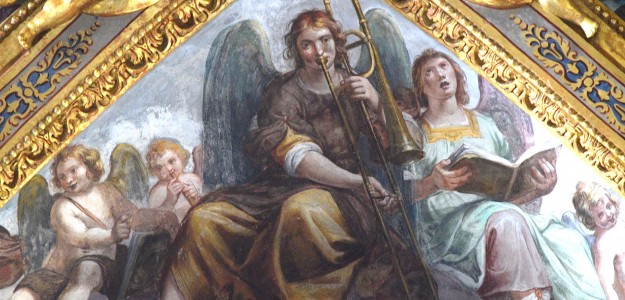Below is an interactive Google map on which are plotted all the European images from the Timeline, pre-1800, at least those that could be reasonably linked with a location. There are approximately 280 included.
Features: Clicking on an individual pin will give you additional information for that image, including a view of the picture (followed by other pictures that Google suggests for that location). If the pins are too close together to click on a discreet pin, zoom in on the map. The pins are color-coded by century: red for 15th & 16th centuries, blue for 17th century, and green for 18th century. If you click on the top right corner of the map and expand it, you can still view all the individual pins on the map as a whole, but you can also select or de-select by century by clicking the boxes along the left side of the map.
Caveats: Some of the art is still located today where it has been plotted on the map (a fresco in a church, for example), while other examples may have been originally created in their plotted location, but are now housed elsewhere (in a museum, for example). If you zoom in, you may notice that in some major cities I have staggered pins that do not have exact street addresses in order to better show multiple pins in the same city (since they would otherwise overlap exactly and look like just one pin). My strongest caveat in posting this map is that some of the exact street locations may not be correct; I’ve done my best, but I would recommend double-checking street addresses before you plan an actual trip!
What can be learned from such a map? There are enough data points (285) that it can provide another way of looking at one aspect of trombone history. The viewer might observe, for example, the high concentration of images of angel-trombonists in northern Italy. This could possibly reflect a trend in social perceptions of the instrument in that particular region (although it could also mean different things, depending on how you interpret the data). The viewer may observe the relative lack of images in France and England, especially compared to Italy and Germany. And Eastern Europe looks even more sparse. Could that reflect the relative activity level of the trombone in general in those areas? Perhaps, perhaps not. But it may be worth considering. The viewer might observe the concentration of images in Portugal early in the trombone’s history that seems to disappear in later centuries. Perhaps this is coincidental, or perhaps it could reflect some other broader trend in the history of the trombone.
I would love your comments or even additional contributions! Feel free to add me on Facebook or email me at will.kimball@byu.edu. Enjoy!
